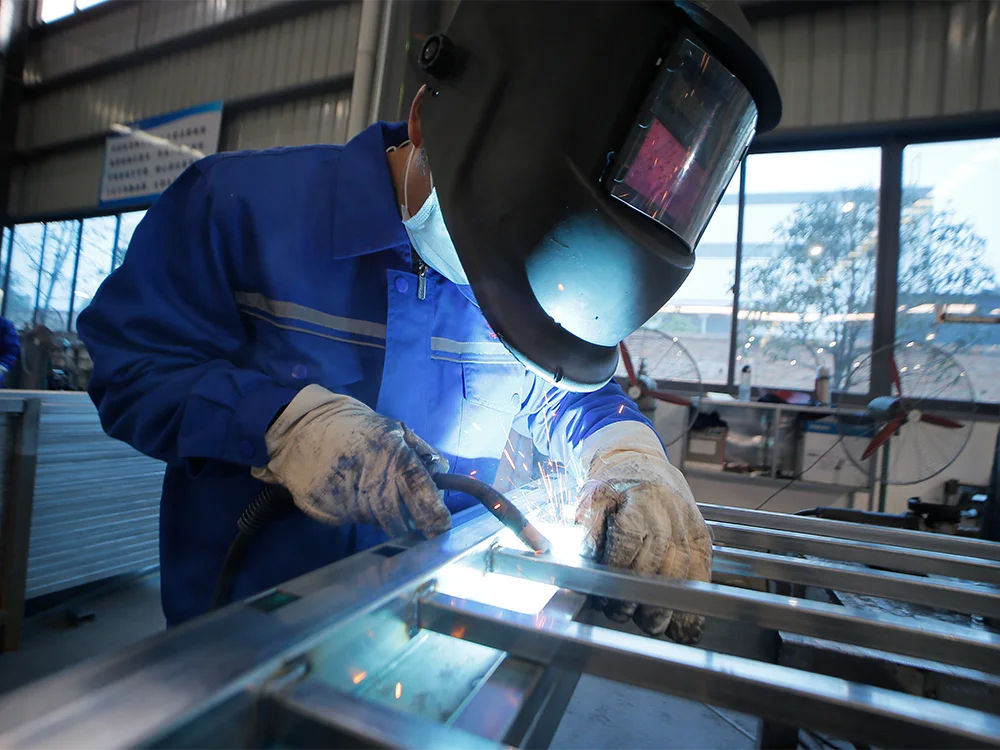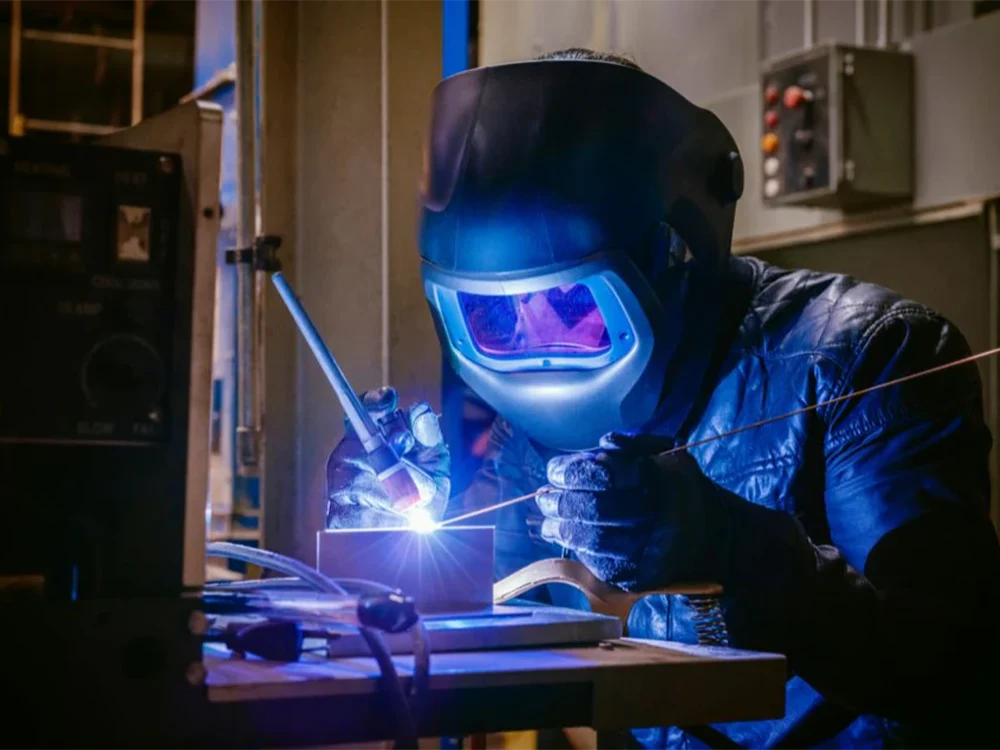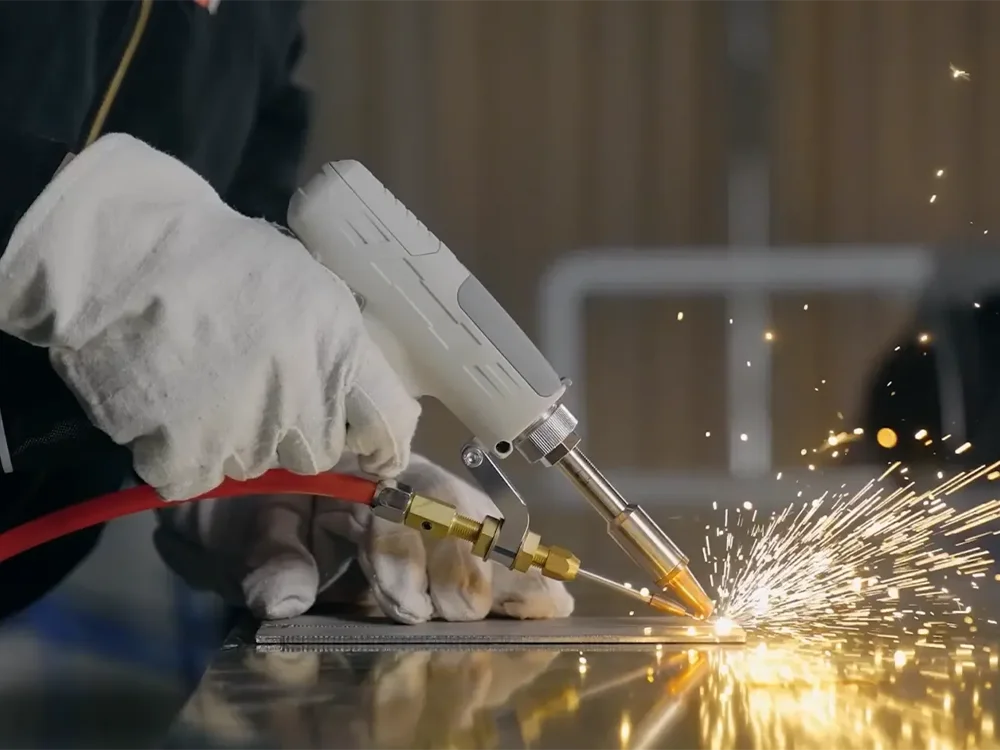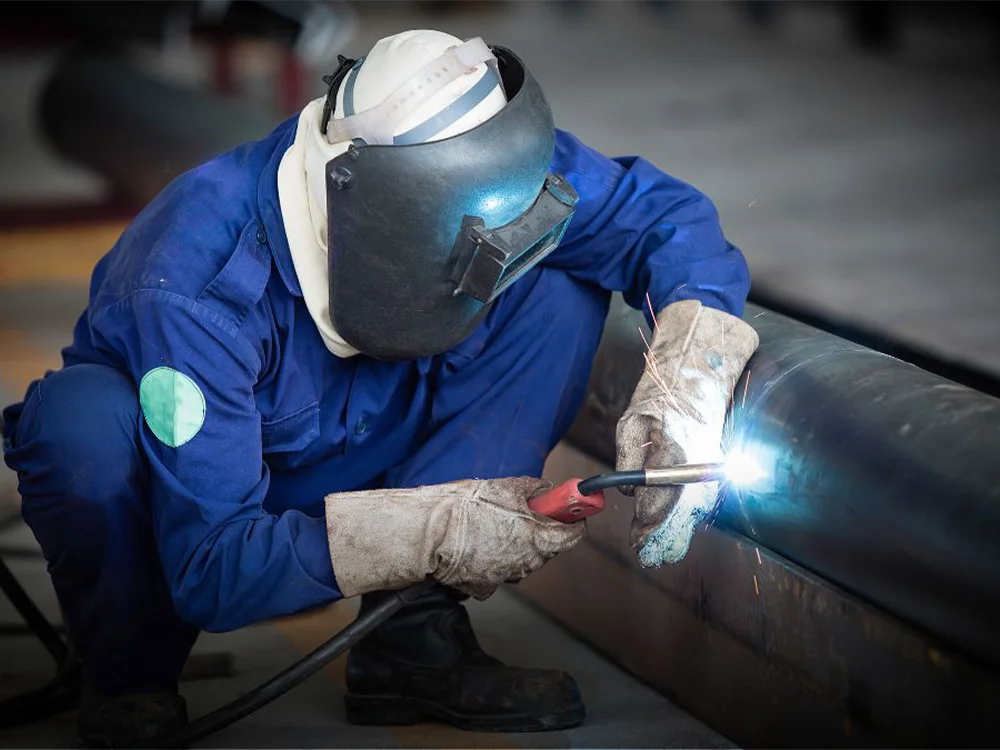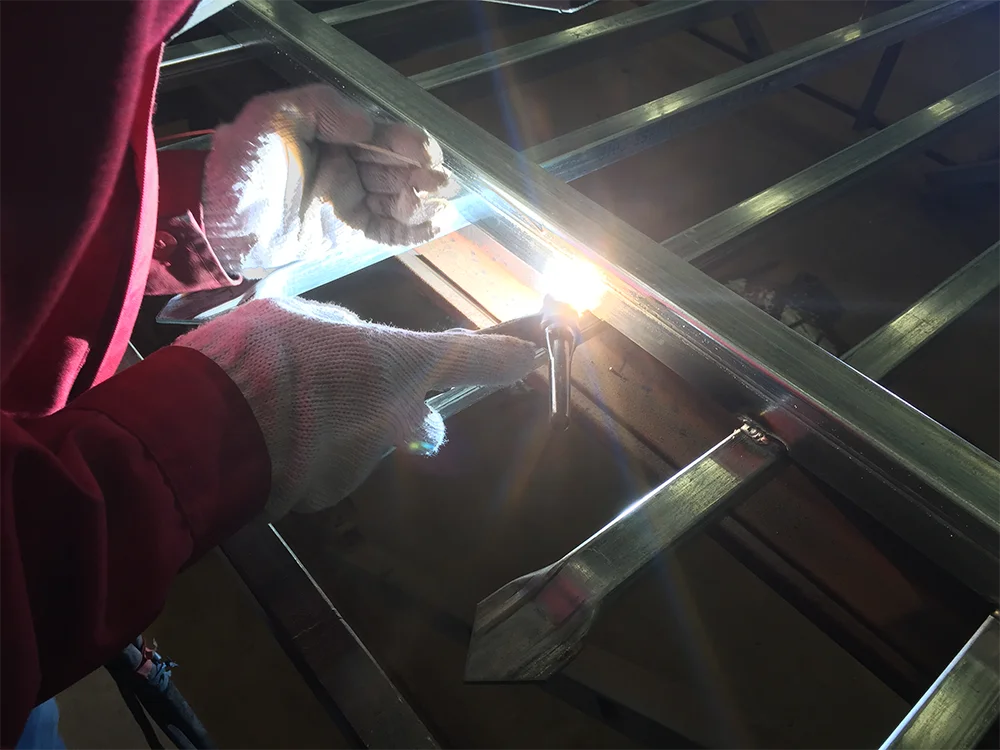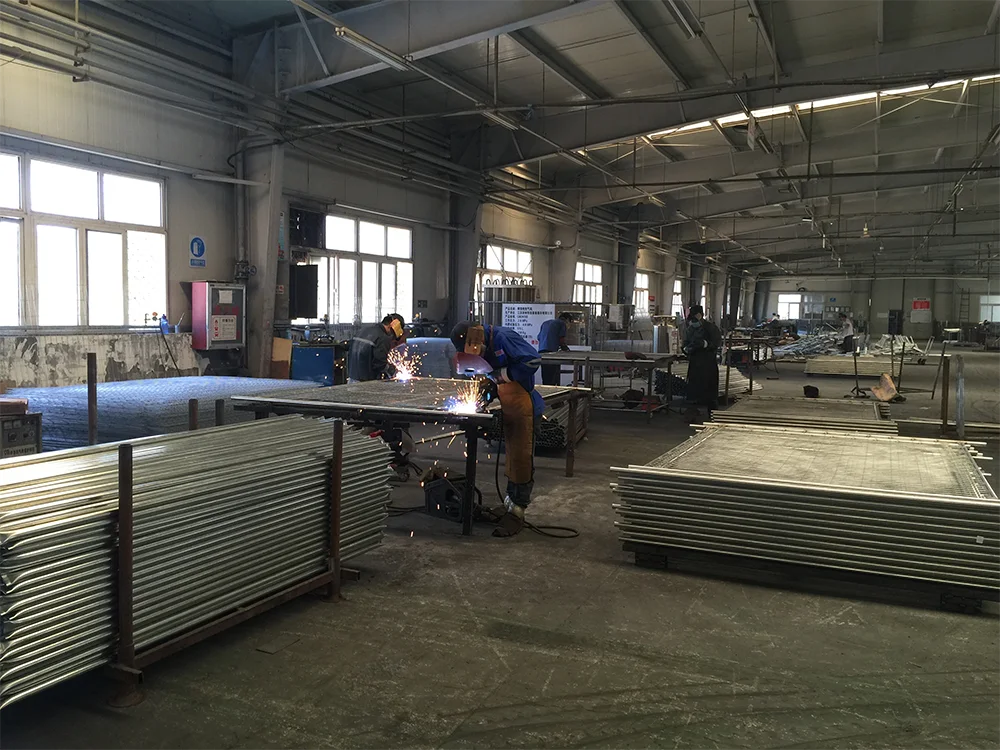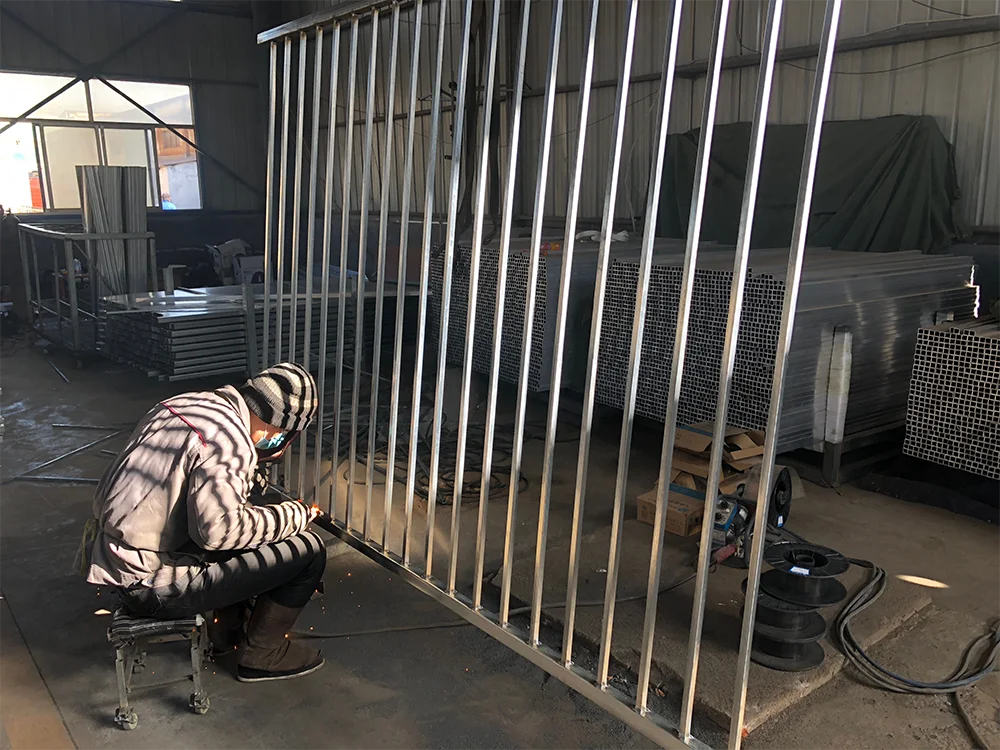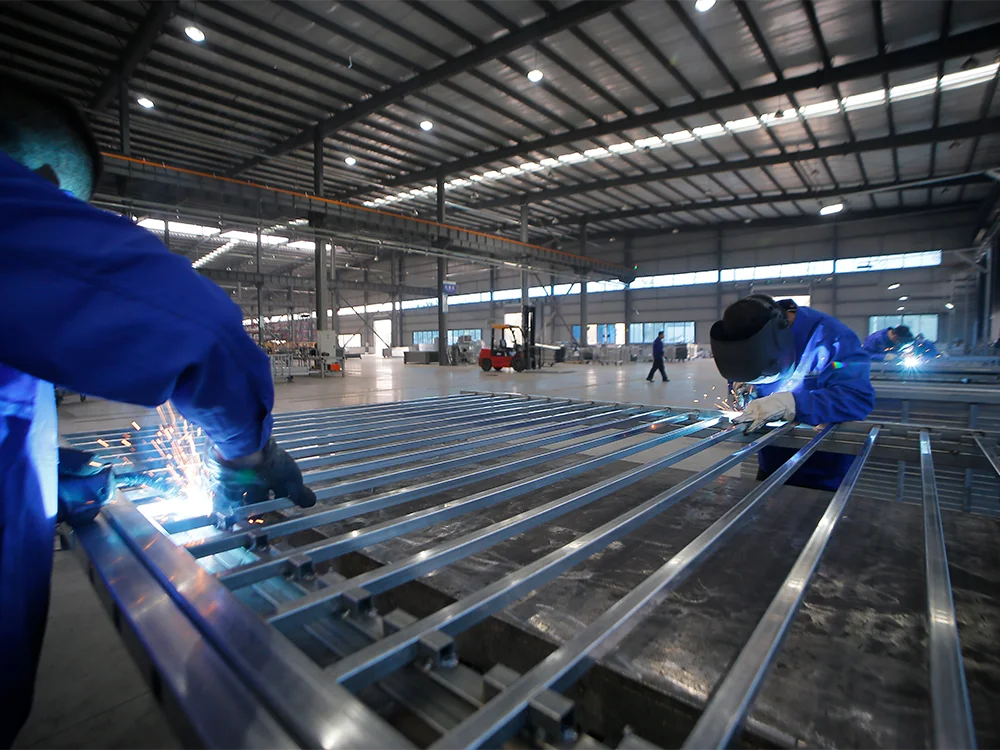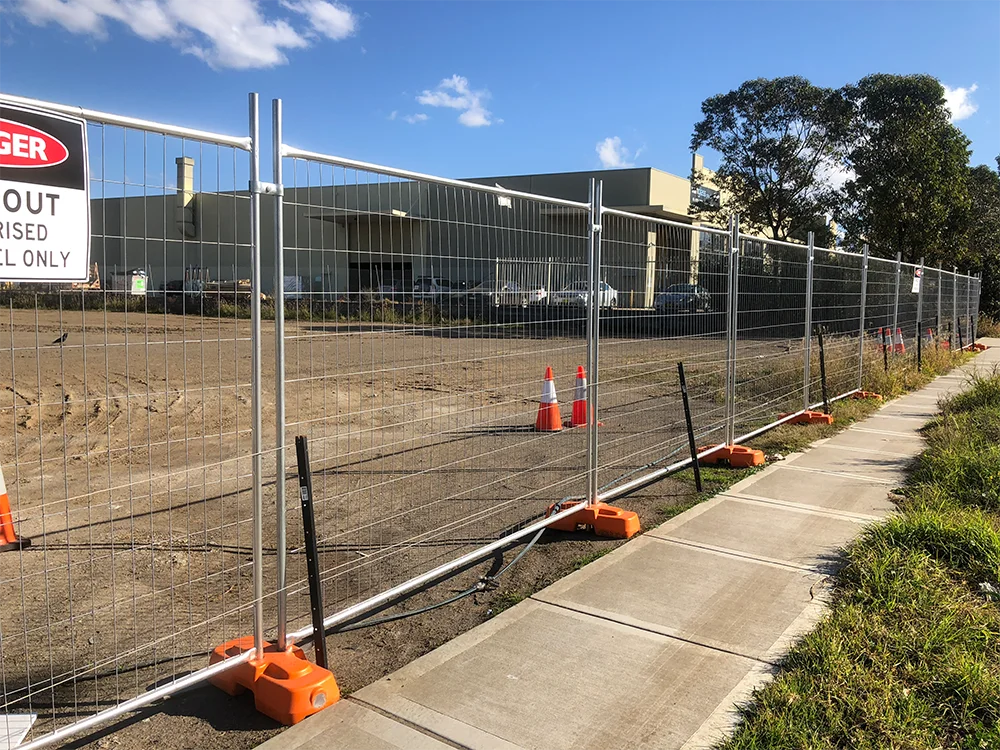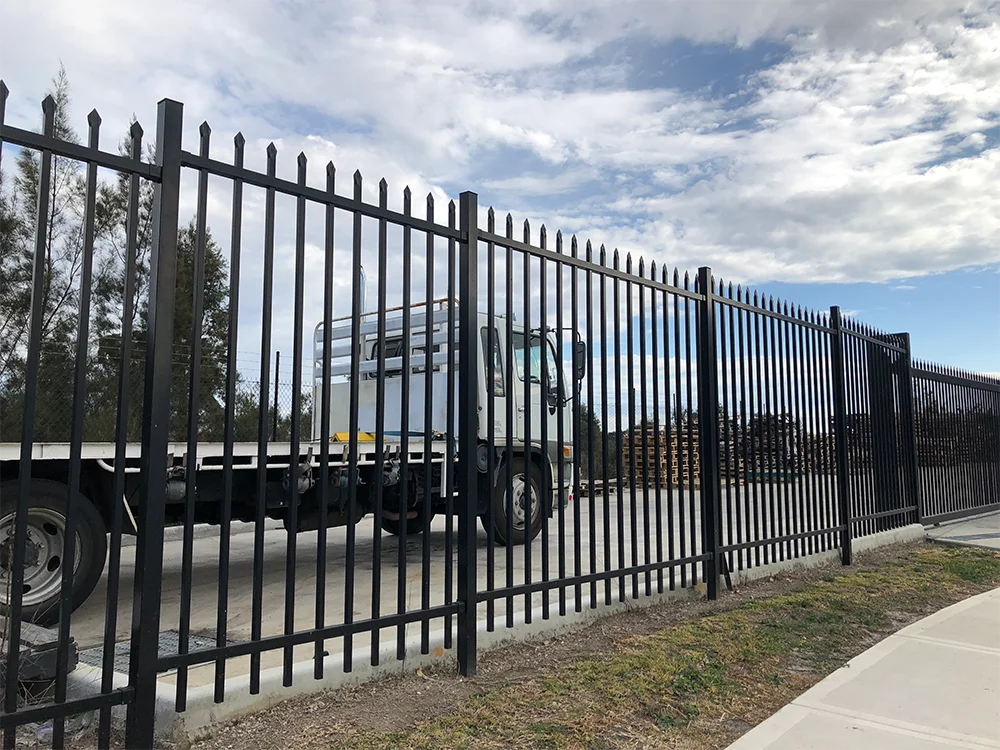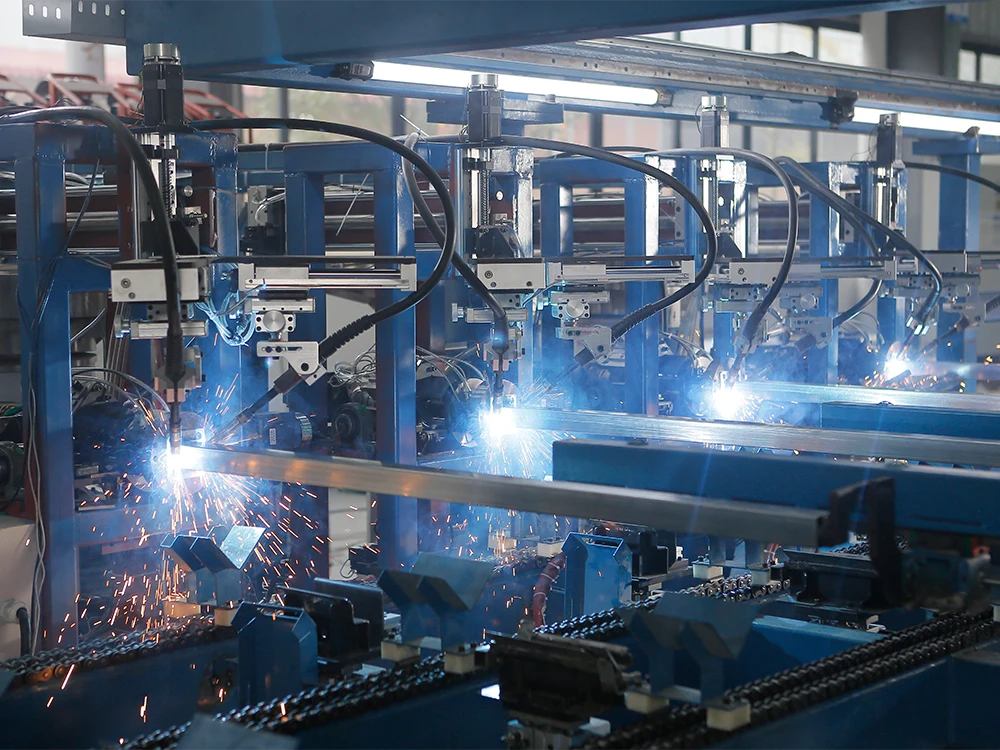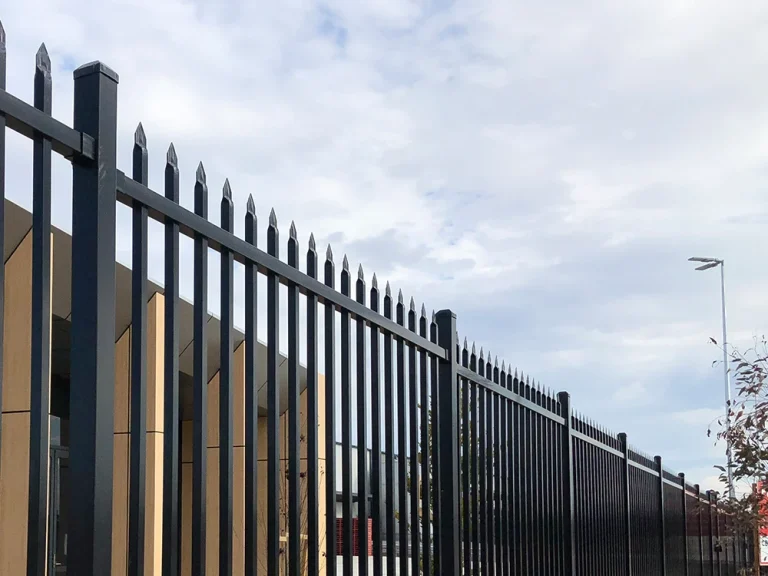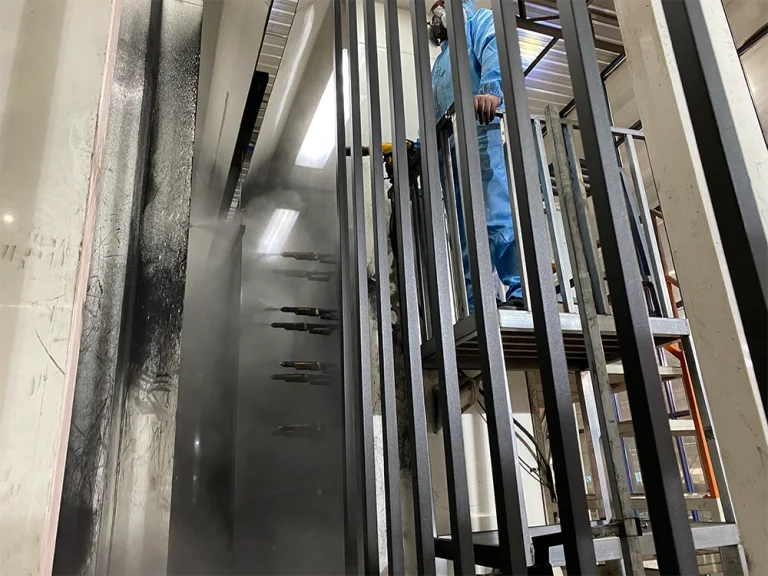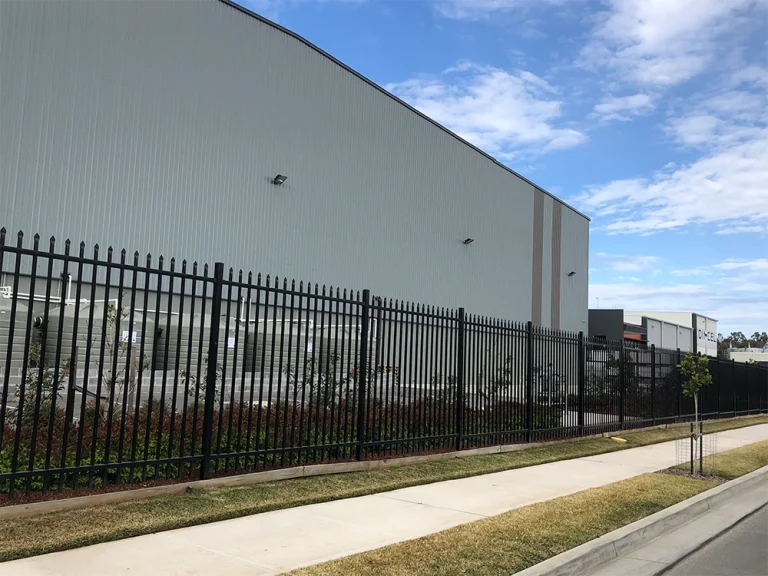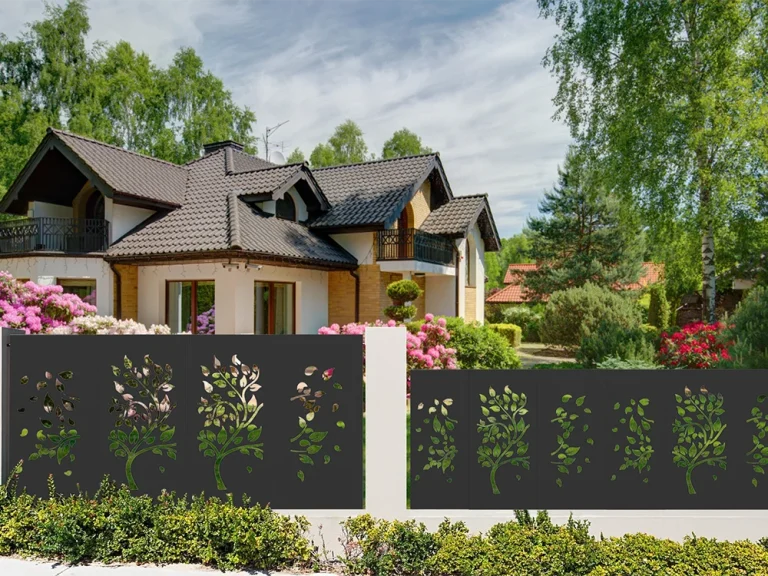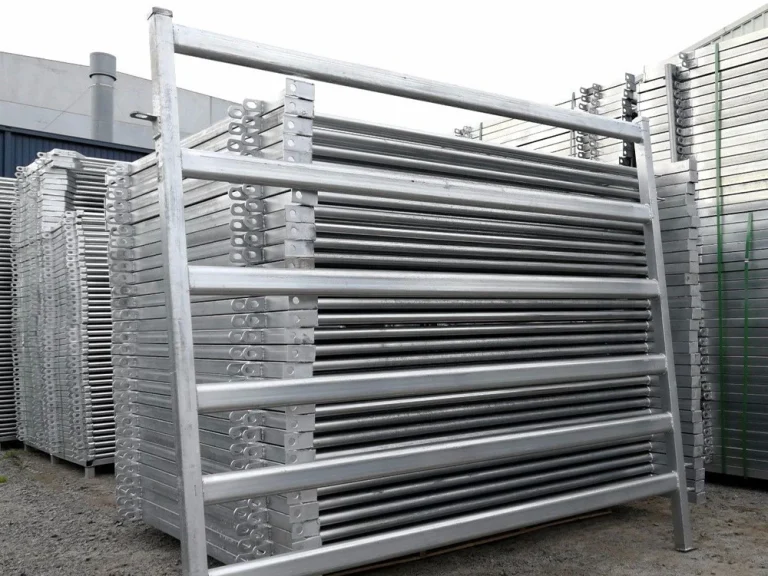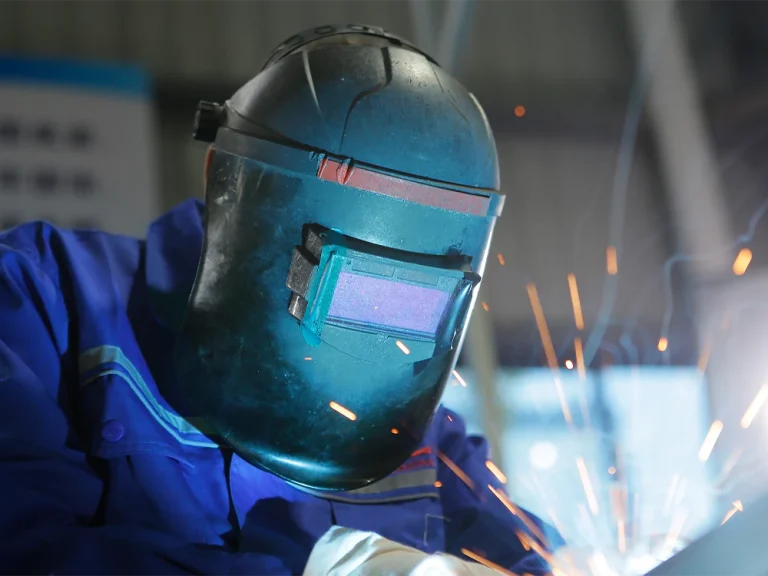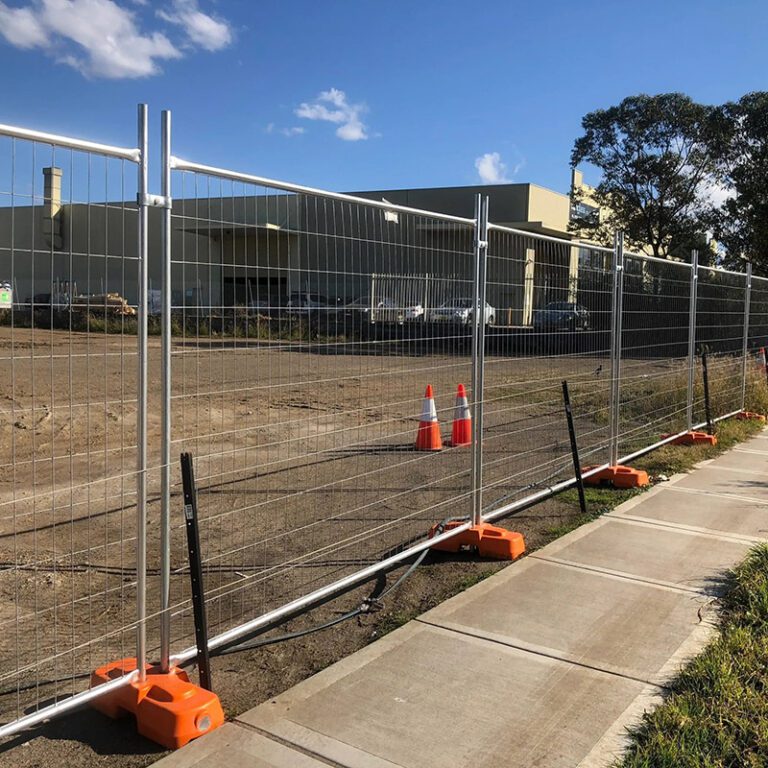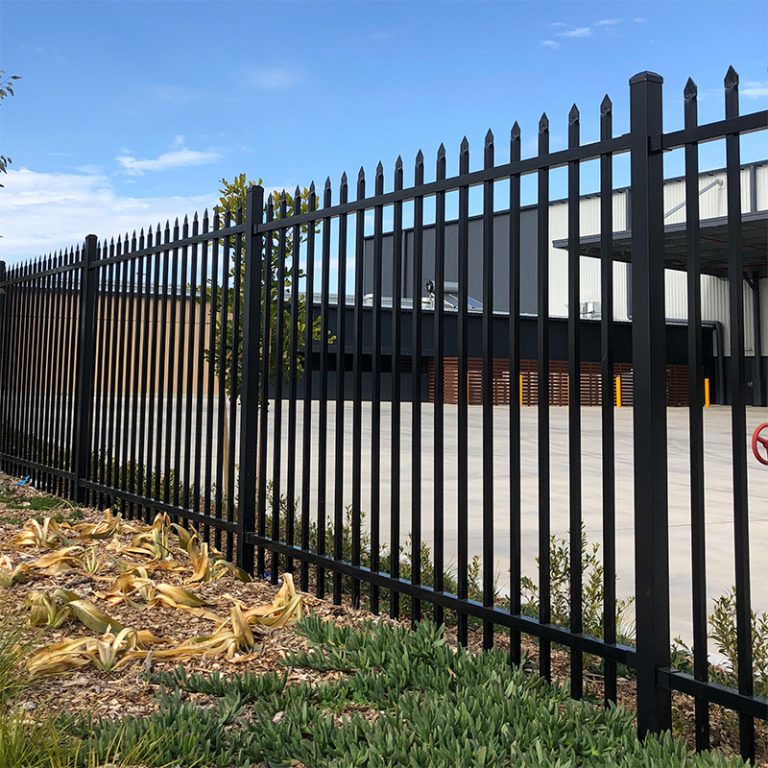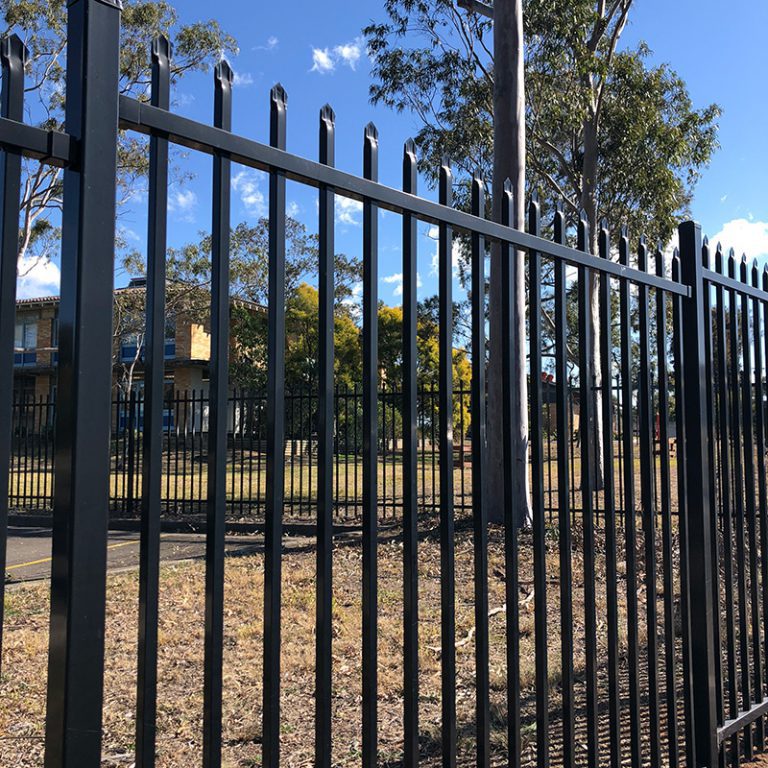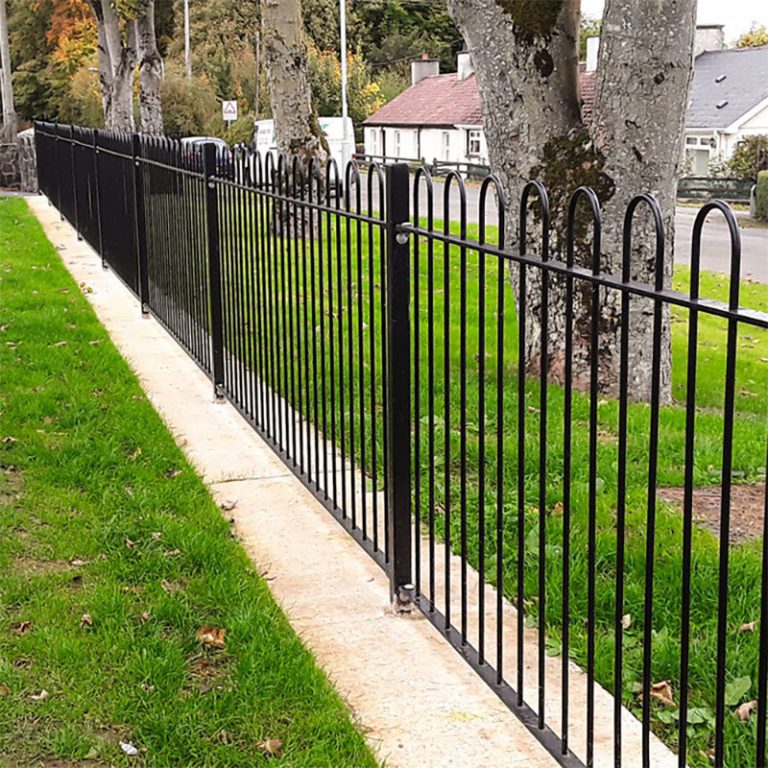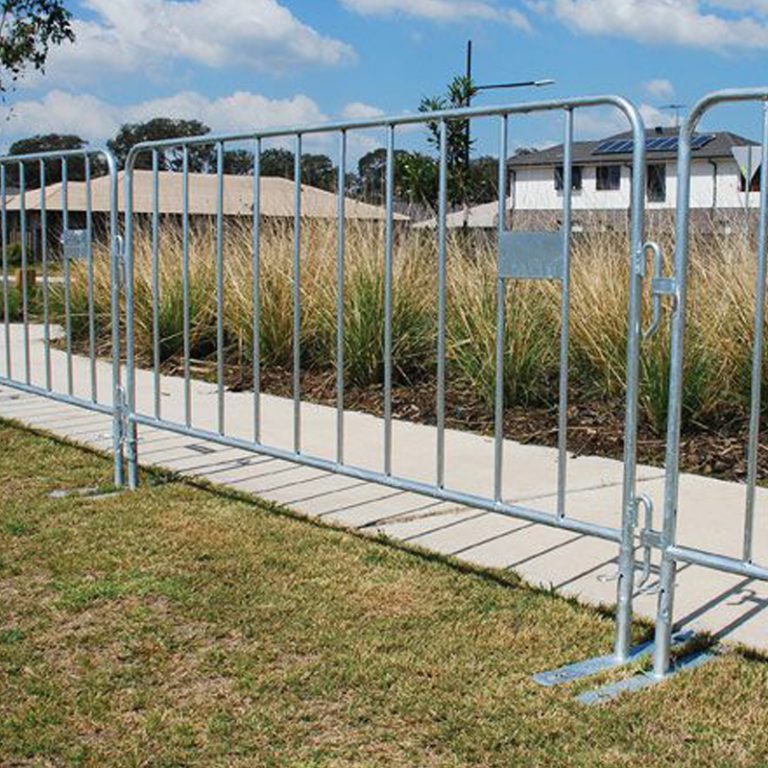In the competitive landscape of fence manufacturing, the adoption of advanced welding technologies plays a pivotal role in distinguishing high-quality products from the rest. This comprehensive guide delves into various welding techniques such as MIG, TIG, FCAW, SAW, and FSW, and explores their applications in creating durable and aesthetically pleasing fencing solutions. Additionally, we will discuss the specific advantages of our range of products including welded mesh temporary fences, palisade fencing, vertical slat fencing, spear top fences, and chain link dog kennels. By integrating cutting-edge welding processes with stringent safety measures, we aim to highlight how these innovations not only enhance product quality but also contribute to operational efficiency and environmental safety.
8 Different Steel Fences Welding Processes
1. CO2 Shielded Welding (MIG Welding)
CO2 shielded welding, commonly known as Metal Inert Gas (MIG) welding, uses a carbon dioxide-rich shielding gas to protect the weld pool from oxidation during the welding process. This method is highly favored for its versatility and efficiency in joining steel components. It allows for deeper penetration into the metal, resulting in strong and robust joints. The continuous wire feed also ensures a smoother and more consistent weld, making it ideal for constructing long stretches of steel fences.
2. Arc Welding (Stick Welding)
Arc welding, or stick welding, is one of the oldest and most widely used welding techniques in the fence manufacturing industry. This process involves an electric arc formed between a consumable electrode and the steel workpiece. The intense heat generated by the arc melts the metals, allowing them to fuse upon cooling. Arc welding is particularly effective for outdoor construction due to its portability and the ability to perform well even in windy conditions.
3. TIG Welding (Tungsten Inert Gas Welding)
TIG welding offers unparalleled precision and quality, making it a preferred choice for welding intricate and aesthetically pleasing steel fences. This technique uses a non-consumable tungsten electrode to produce the weld and argon as a shielding gas to protect the weld area from contamination. TIG welding is renowned for its clean and high-quality finishes, which are essential for decorative fence panels.
4. Laser Welding
Laser welding uses a high-intensity laser beam to melt and fuse metal parts. This technology provides a concentrated heat source, allowing for narrow, deep welds and high welding rates. The precision and speed of laser welding make it an excellent option for large-scale production of steel fences, where consistency and production efficiency are paramount.
5. Electron Beam Welding
Electron beam welding offers a highly concentrated heat source capable of welding even the thickest steel sections. This process is conducted in a vacuum, which significantly reduces the contamination and allows for clean, strong welds. Although more complex and costly, electron beam welding is used for high-duty applications where the integrity of the weld is critical.
6. Flux-Cored Arc Welding (FCAW)
Flux-Cored Arc Welding is similar to MIG welding but uses a special tubular wire filled with flux. The flux reacts with the arc to form a gas shield around the weld, which helps protect against atmospheric contamination. This method is particularly effective for thicker joints and provides higher deposition rates, which can significantly speed up the manufacturing process. FCAW is versatile enough to be used outdoors, making it ideal for constructing robust steel fences.
7. Submerged Arc Welding (SAW)
Submerged Arc Welding involves the formation of an arc between a continuously-fed bare wire electrode and the workpiece. The process is submerged under a blanket of granular fusible flux, which covers the weld zone completely, preventing spatter and reducing UV radiation. This method is known for its high quality and efficiency, producing deep penetration welds ideal for large-scale constructions such as fence frameworks.
8. Friction Stir Welding (FSW)
Friction Stir Welding is a relatively new technique that uses a non-consumable rotating tool to join two-facing workpieces without melting the material. FSW is mainly used for aluminum and other low-melting-point materials but is increasingly being adapted for steel. It offers excellent joint strength and high integrity, making it suitable for applications where traditional fusion welding techniques might fail.
Advantages of Modern Welding Technologies in Fence Production
Modern welding technologies offer numerous advantages for fence manufacturing, including:
– Enhanced Durability:
Advanced welding techniques create stronger bonds that significantly improve the longevity and durability of steel fences.
– Aesthetic Quality:
Techniques like TIG and laser welding provide superior finish quality, thus ensuring that the fences are not only strong but also visually appealing.
– Increased Production Efficiency:
Methods like FCAW and SAW enable faster production rates, which can help meet large orders more efficiently.
– Environmental Safety:
Modern welding processes, such as FSW, produce no fumes and have a lower environmental impact compared to traditional welding methods.
Factors Influencing Welding Quality
Several factors impact the quality of welding in steel fence production, including:
– Skill of the Welder:
Highly skilled welders can adjust techniques and parameters to suit specific tasks, thus greatly influencing the strength and appearance of the weld.
– Material Properties:
Different steel grades and their compatibility with welding methods affect the final outcome.
– Welding Equipment and Settings:
Advanced welding machines with precise control settings contribute to consistent quality.
– Environmental Conditions:
External conditions such as wind, temperature, and humidity can affect the welding process, especially in outdoor settings.
Welding Safety Measures
Ensuring safety during welding operations is paramount. Here are some key welding safety measures:
– Proper Ventilation:
Adequate ventilation is crucial to disperse harmful welding fumes and gases.
– Use of Protective Gear:
Welders should always wear appropriate protective gear, including helmets with visors, gloves, and protective clothing.
– Regular Training:
Continuous training and certification in new welding technologies and safety protocols are essential to maintain high standards of safety and quality.
– Equipment Maintenance:
Regular checks and maintenance of welding equipment ensure safe and efficient operation.
Our Competitive Advantage
As a leading professional fence manufacturer, we leverage advanced welding technologies to ensure our steel fences are not only structurally sound but also aesthetically pleasing. Our expertise in various welding processes allows us to choose the most suitable technique based on the specific requirements of each project. Our commitment to quality and innovation positions us as a top choice for customers seeking durable and attractive fencing solutions.
Advantages of Our Welded Fencing Products
Our range of welded fencing products combines advanced welding technologies with high-quality materials to deliver superior fencing solutions. Here’s a detailed look at the advantages of each product:
Welded Mesh Temporary Fence
– Flexibility and Mobility:
Our welded mesh temporary fences are designed for easy installation and removal, thus making them perfect for short-term events or construction sites.
– Durability:
Despite their temporary nature, these fences are built to withstand various environmental conditions, thanks to the robust welding that ensures strong joints.
– Security:
The tight mesh patterns provide excellent security, preventing intrusion and unauthorized access.
Palisade Fencing
– Strong Deterrent:
The pointed tops of palisade fencing make it an excellent deterrent against intruders, combining physical security with psychological discouragement.
– Longevity:
We use high-quality steel and protective coatings in our palisade fencing, thus ensuring it resists corrosion and wear over time.
– Aesthetic Options:
Available in various colors and styles, our palisade fencing can be tailored to enhance the visual appeal of any property.
Vertical Slat Fencing
– Privacy and Protection:
Vertical slat fencing offers a balance of privacy and airflow, making it ideal for residential and commercial boundaries.
– Customizable Designs:
The spacing and width of the slats can be adjusted to meet specific design and functionality requirements.
– Low Maintenance:
Our welding process ensures that the slats are securely attached, reducing the need for frequent maintenance.
Spear Top Fence
– Enhanced Security:
The spear tops provide a high level of security, making it difficult for intruders to climb over.
– Elegant Appearance:
Spear top fences offer a classic look that enhances the property’s curb appeal without compromising on security.
– Versatility:
Suitable for both residential and commercial properties, spear top fences can be customized in height and color.
Chain Link Dog Kennel
– Safety for Pets:
The smooth surfaces and sturdy construction of our chain link dog kennels protect pets from injuries while containing them securely.
– Visibility:
Owners can easily monitor their pets thanks to the open weave of the chain link, thus ensuring pets are safe and comfortable.
– Resistance to Elements:
Our kennels are made with galvanized steel, thus making them resistant to rust and degradation from exposure to the elements.
Conclusion:
Our exploration of advanced welding technologies and their application in fence manufacturing underscores our commitment to excellence. By employing sophisticated welding techniques, we ensure that each fence is not only structurally sound but also meets the aesthetic expectations of modern consumers. The detailed analysis of our product range—from temporary fences to permanent solutions—demonstrates their suitability for various applications, ensuring both security and style. As we continue to innovate and adopt the latest in welding technology, our company remains at the forefront of the fence manufacturing industry, offering products that are a testament to durability, design, and dedication to quality. This commitment not only sets us apart from competitors but also reassures our customers of the best value and service in the market.

